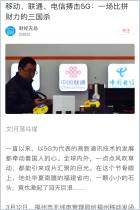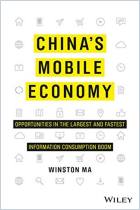Getting consumers and businesses to adopt 5G may prove to be quite difficult – explains reporter Tang Yu in this article from AI Caijing News. After years of building telecom towers and testing networks, China’s 5G era has begun: On November 1, 2019, China’s three largest telecommunications providers made 5G smartphones and data plans available for purchasing in 50 first and second-tier cities. To ease the nationwide 5G rollout, the three telecom companies – China Unicom, China Mobile, and China Telecom – are offering identical data plans so that competition does not get in the way of efficiency. Find out why conversion to 5G may be rocky anyway.
China commercially launched 5G services, but for consumers, switching from 4G to 5G is expensive and troublesome.
China’s top three telecom providers – China Mobile, China Unicom, and China Telecom – began offering 5G services to their customers on November 1, 2019. Enthusiasm for the new technology is high among Chinese consumers, but many hesitate to switch anyway. Connecting via 5G requires buying a new 5G-compatible phone – which costs at least ¥4000 (roughly $570).
The cheapest 5G data plans starts at ¥128 per month for 30 gigabytes of data. While that’s far more than a typical 4G data plan offers, 5G’s fast download speed means people will use it up much more quickly. Additional services such as high definition for videos, cloud gaming and cloud virtual reality/augmented reality (VR/AR) will also charge fees after an initial free trial period for the first few months.
The high costs result partly from the 5G providers’ expenses for building the new networks. An area that needed 10 telecom towers for a stable 4G connection will need 20 towers for 5G. Each tower requires an investment of ¥400,000 to ¥1 million to build. By the end of 2019, ...



















Comment on this summary or Start Discussion